Research: CONUS
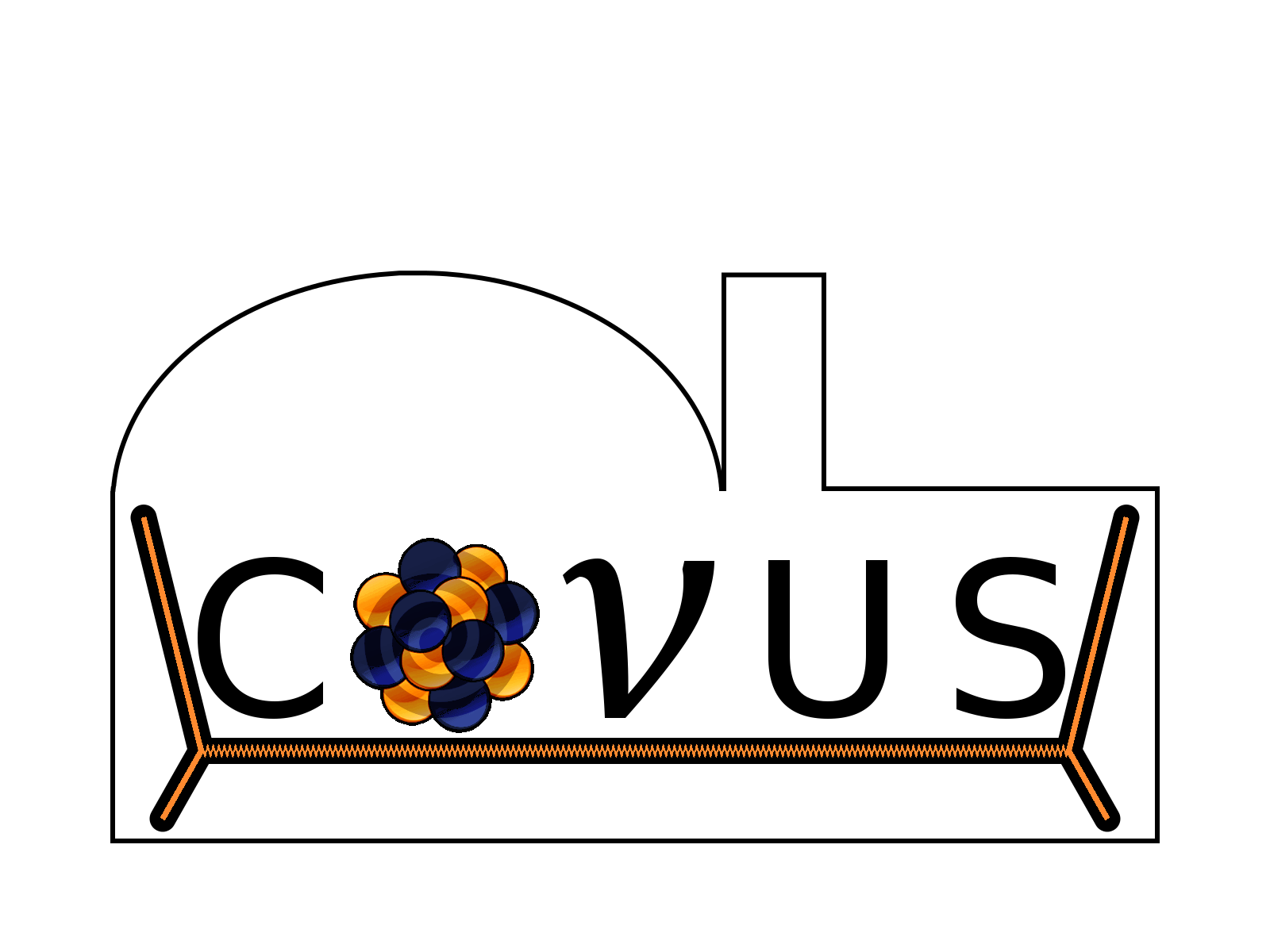
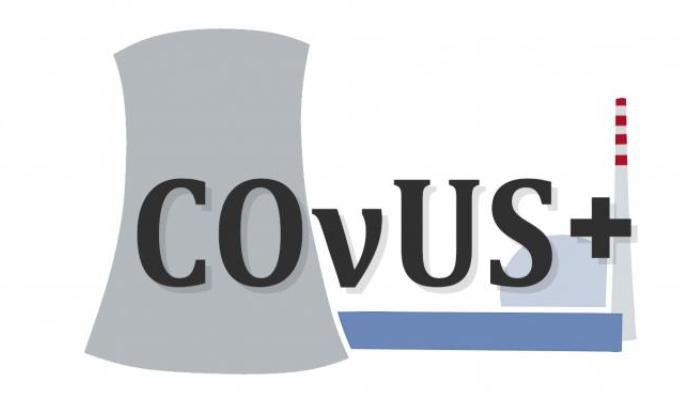
Detecting coherent neutrino-nucleus scattering
Coherent scattering of neutrinos on atomic nuclei is an interaction predicted from theory and is of major relevance for fundamental research. The CONUS experiment aims to detect and characterize this interaction channel at nuclear power plants. Neutrinos, which are created in large amounts by nuclear fission products and not usable for power generation, are studied in this experiment in a novel way. CONUS operated between 2018-2022 at the Brokdorf power plant managed by PreussenElektra GmbH. It moved after some upgrades in 2023 to the Leibstadt (CH) power plant operated by Leibstadt AG, where it is now taking data as under the name CONUS+.
Neutrinos - Interaction with matter
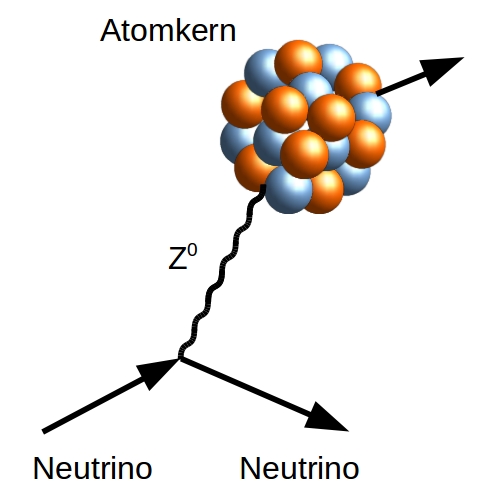
Figure 1: Coherent scattering of a neutrino on an atomic nucleus.
Since neutrinos only interact weakly with matter, the devices for neutrino detection are typically very large up to masses of hundreds of tons or even kilo-tons of material. In principle, neutrinos can interact with matter in two ways: either on electrons in the atomic shell or on protons/neutrons in the nucleus. In the latter case, there is the possibility for the neutrino to 'coherently' scatter on the nucleus as a whole increasing substantially the probability for the scattering process. On the other hand, coherence requires that the neutrino has a long enough wavelength which transaltes into low energies. As a consequence the energy transfer on the nucleus is tiny for coherent scattering, similar to the situation of a table tennis ball hitting a basketball. It is quite simple to strike, but hard to move the target. Therefore dedicated detectors with very low energy thresh- old are needed for this detection, but only a few kilograms of material might be sufficient to meet the goal! The challenges of such an experiment made the experimental confirmation of the theoretical predictions in the 1970s impossible for more than 40 years. In 2017 the coherent scattering of neutrinos on nuclei was detected for the first time by the COHERENT experiment. The higher-energy neutrinos in this experiment were produced at an atomic nucleus using a neutron beam. In 2024 the XENON collaboration observed a first indication of neutrino coherent scattering being produced by 8B isotopes in the Sun.
The CONUS experiment
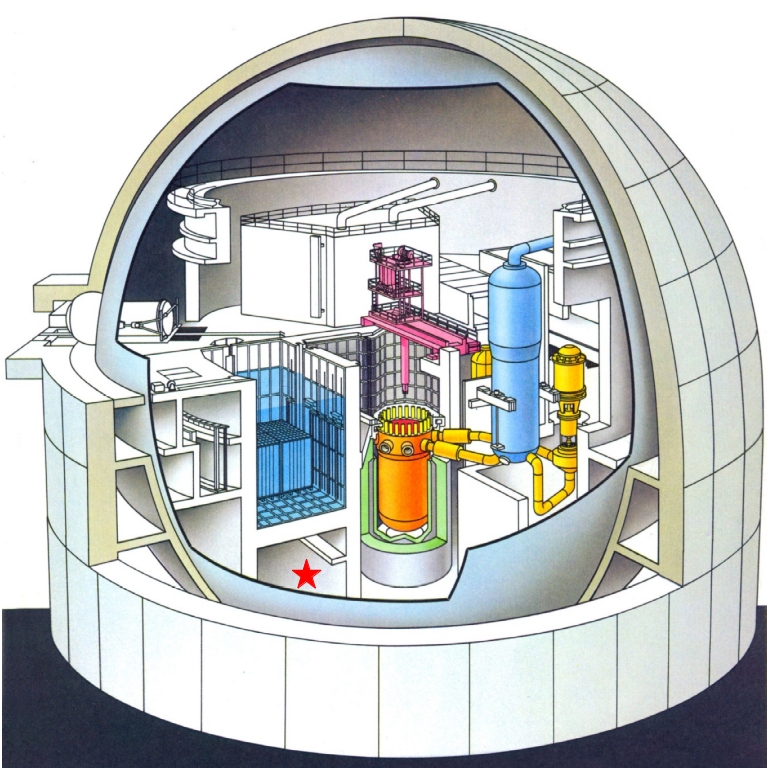
Figure 2: Inner view of the safety containment of the nuclear power plant in Brokdorf. The location of the CONUS setup ist marked with a red star.
The detection and characterization of the coherent neutrino-nucleus scattering require an experimental setup very close to a strong and well controlled neutrino source. In competition with other international efforts, this idea is realized in the CONUS+ (COherent Neutrino nUcleus Scattering) experiment, which is operated in collaboration with Leibstadt AG in Leibstadt. The measurement of the reactor neutrinos does not influence the reactor or make any demands on the operation of the power plant. The distance of the experimental setup to the reactor core is 21 meters only. Therefore, from one of the worldwide strongest reactors, an extremely high flux of 14 trillions of neutrinos per second and square centimeter is available for measurements. The combination with the purpose-built shielding and the advanced detectors makes the experiment a leading project.
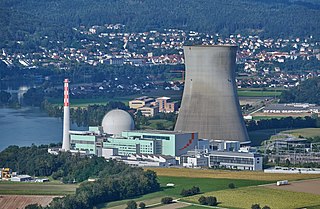
Abbildung 3: The Leibstadt (CH) nuclear power plant where CONUS+ is taking data since 2023.
The CONUS experiment uses high-purity germanium semiconductor detectors sensitive to ionizing radiation. Several layers of ultrapure lead and boron-doped polyethylene shielding with a total mass of 9 tons protect the detectors against external radioactivity. The remaining fraction of this background radiation is rejected using an extra cosmic-ray detector. The shielding design is based on the world-leading expertise established at MPIK over many decades. Furthermore, the reactor building provides an extra shield reducing cosmic muon radiation.
Status of the experiment
In November 2023, data collection with the CONUS+ detector started and in January 2025
results from the first run of CONUS+ were published.The reactor is off for about one month per year for maintenance operations.
A comparison of reactor ON and reactor OFF data and backgrounds yielded a 3.7σ excess for the rare neutrino interaction process already after 9 months of data acquisition only. In parallel three new detectors with 2.4 times more mass and improved energy thresholds were installed in November 2024. With the additional statistic
of more data and refined analyses methods, the CONUS collaboration will be able to scrutinize the coherent neutrino-nucleus scattering with reactor neutrinos even better in the upcoming years.
Applications
Detection and precise measurement of coherent neutrino nucleus scattering are of fundamental importance for basic research, since they give insights in various microscopic processes. Moreover, neutrinos play a crucial role in several eminent astrophysical and cosmological events in the Universe. This includes star collapses (supernovae) emitting inconceivable amounts of neutrinos undergoing coherent scattering processes with nuclei during their propagation through the imploding star layers. The CONUS+ experiment at the nuclear power plant in Leibstadt measured for the first time coherent neutrino-nucleus scattering in the energy range of reactor neutrinos applying most up-to-date germanium detector technology. A precise measurement of the neutrino flux at nuclear reactors could in principle be used in the context of reactor monitoring, safeguard applications or for thermal power determination.
Kontakt
-
Prof. Dr. Dr. h.c. Manfred Lindner:
Tel: +49 6221 516800
E-Mail: manfred.lindner [at] mpi-hd.mpg.de
-
Dr. Werner Maneschg:
Tel: +49 6221 516287
E-Mail: werner.maneschg [at] mpi-hd.mpg.de
-
Dr. Christian Buck:
Tel: +49 6221 516829
E-Mail: christian.buck [at] mpi-hd.mpg.de